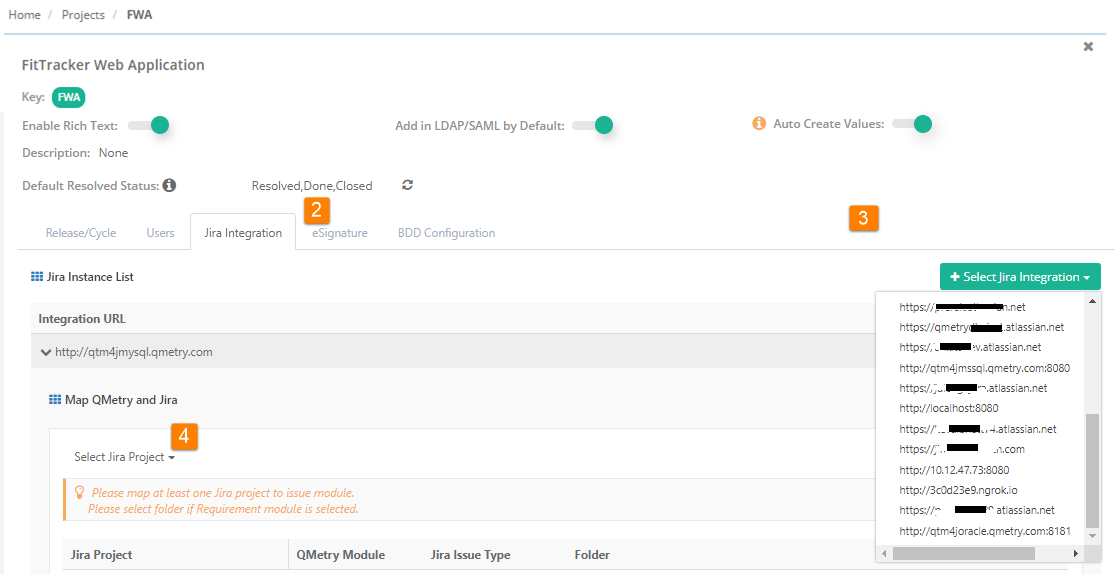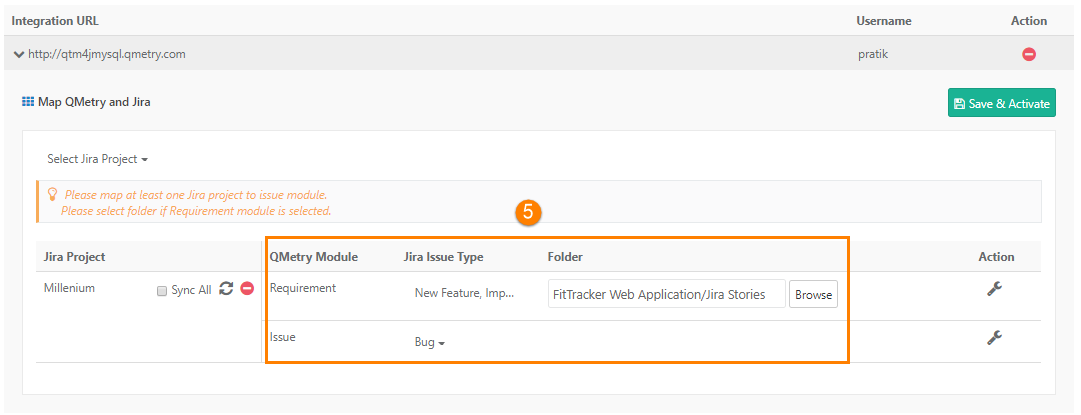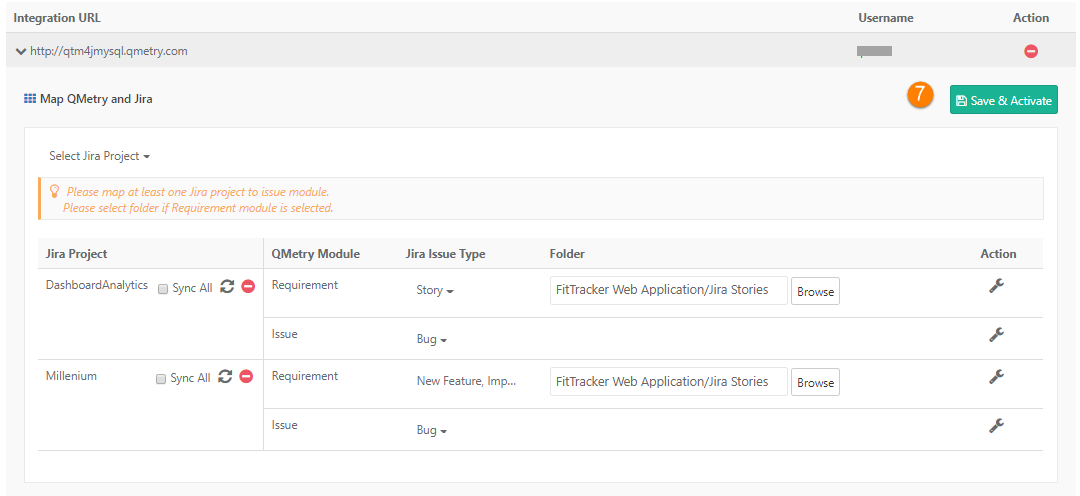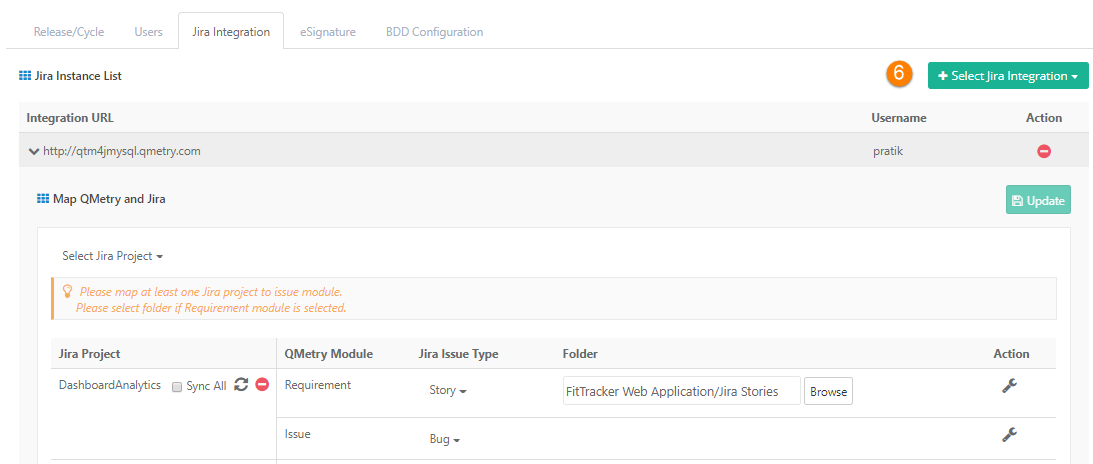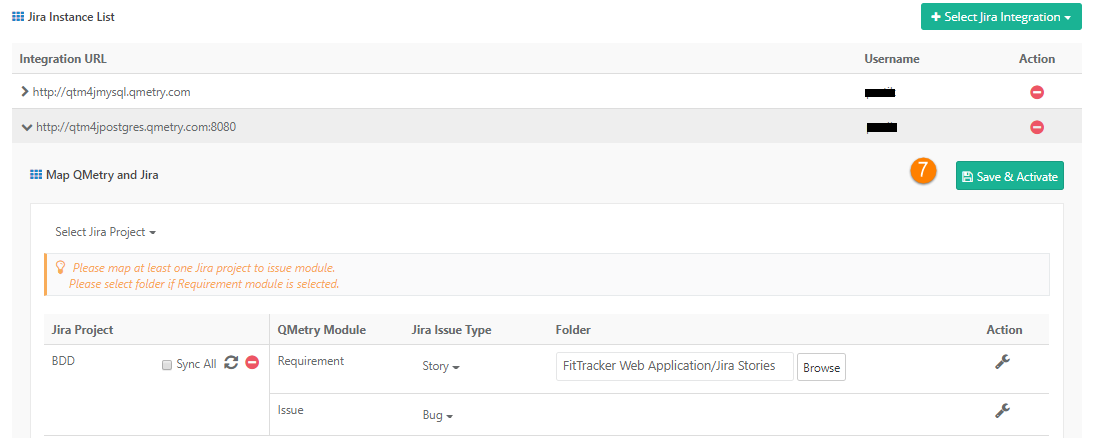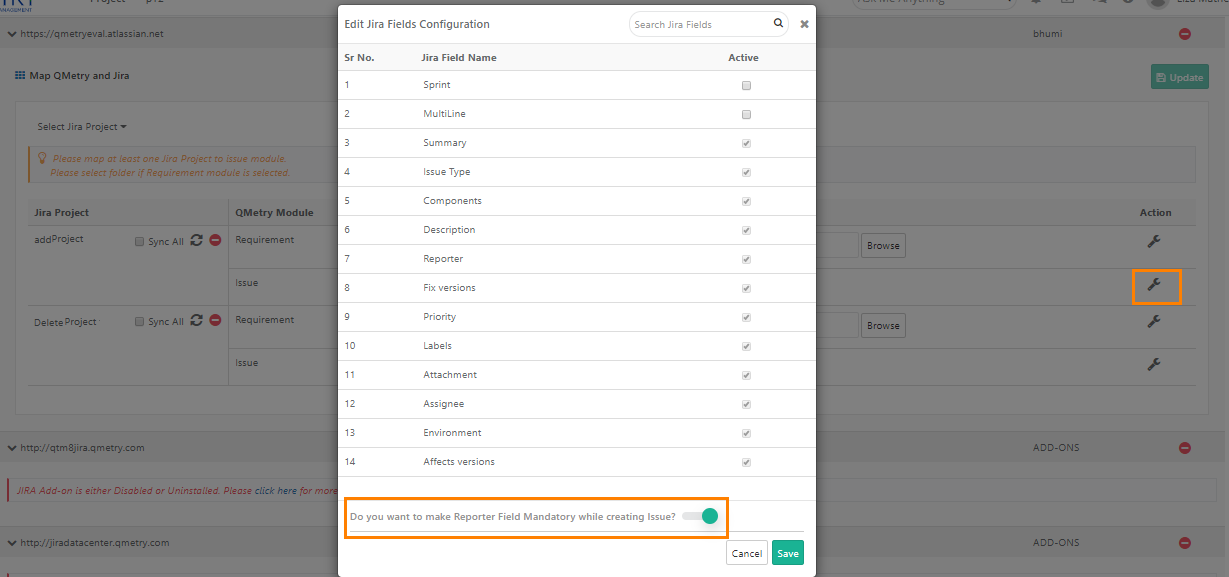| Table of Contents | ||
|---|---|---|
|
Map Jira Project with QMetry Project
Map Single Jira Project with QMetry Project
These steps have to be performed in QMetry by Login as QMetry Project Admin :
- Go to Projects > Project/Release/Cycle
- Open the Project > Jira Integration tab.
- Select the Jira URL with which this QMetry project mapping has to be done.
- Select the Jira project to configure with this QMetry Project.
- Once the Project is selected, select Issue Type <> QMetry Module associations. The issue type is a multi-select list. If requirement is mapped, select folder to import requirements.
- Click on Save and Activate.
Map multiple Jira projects from a single Jira instance with one QMetry project
QMetry 8.5 allows multiple Jira projects to be configured with one QMetry project. Below are the steps for the same :
- Go to Projects > Project/Release/Cycle
- Open the Project > Jira Integration tab.
- Select the Jira URL with which this QMetry project configuration has to be done.
- Select the Jira project to configure with QMetry Project.
- Once the Project is selected, select Issue Type <> QMetry Module associations. The issue type is a multi-select list. If requirement is mapped, select folder to import requirements.
- Once the Jira Project is configured select another Jira project from the list and configure it the same way. This way you can select multiple Jira projects to integrate with one QMetry project.
- Click on Save and Activate. ("Update" if Jira integration was already Saved and Activated for the QMetry project.)
Map multiple Jira projects from multiple Jira instance with one QMetry project
QMetry 8.5 allows multiple Jira instances to be configured with one QMetry project. Below are the steps for the same:
- Go to Projects > Project/Release/Cycle
- Open the Project > Jira Integration tab.
- Select the Jira URL with which this QMetry project configuration has to be done.
- Configure the projects > Save and Activate the Integration.
- Once the Project is selected, select Issue Type <> QMetry Module associations. The issue type is a multi-select list. If requirement is mapped, select folder to import requirements.
- Select another Jira URL from the Jira Integration list.
- Configure the projects > Save and Activate the integration.
- Once the Project is selected, select Issue Type <> QMetry Module associations. The issue type is a multi-select list. If requirement is mapped, select folder to import requirements.
- This way you can integrate multiple Jira instances with QMetry Project.
Map Jira issue type "Epic" with QMetry Requirement/Issue
QMetry supports mapping of "Epic" issue type when integrating Jira project with QMetry project. Users can import Epic issues of Jira as requirements or issues in QMetry and sync those issues.
...
- If Epic is synced with Issue, the Epic issues will be available while logging bugs.
- "Affected Version" in Jira Fields is available only for the "Bug" Type.
- "Epic Name" in Jira Fields is available only for the "Epic" type during creation of issue from execution screen.
- The Epic issue type will be available on Filters.
Known Issues:
- If "Epic" and "Story" are configured with QMetry, the Epic Fields like "Epic Name" will not be displayed in the Create Issue screen for Story.
If "Story"/"Epic" and "Bug" are configured together in the Issue Module, the "Affected Version" will not be displayed in the Create Issue screen for Story/Epic.
Map QMetry Folder to Import Requirements
Project Admin has to select a folder during Jira configuration to import requirements from Jira into QMetry. QMetry v8.5.1 on wards, it is mandatory to select a folder for requirement while Jira integration.
...
- Folders with external entities in it can not be archived. User can move the imported requirements to other folder and then can archive the folder.
- The folder that synced during Jira integration for import of requirements can not be archived.
- In bulk archive folder, the folders having external entity will be skipped. Sub-folders of this folder will also be skipped from bulk archive even they do not have external entities in them.
Change Mapping of Issue Type with Requirement module
Scenario 1. Issue Type mapped with Requirement is replaced with another Issue Type
...
New issues will be synced as requirements as per the added Issue Type.
Configure Custom Jira fields for QMetry Module
QMetry displays default Jira issue fields in QMetry Modules. Project Admin can choose to display Jira custom fields as per project needs. Configuration of custom fields have to done separately for every configured Jira Project and Issue Type.
...
Note : At-least one of the Jira Project should be integrated with Issue Module. Once the Jira is integrated with QMetry project the internal issue module will be disappeared from the QMetry project.
Making Reporter field mandatory while creating issue
You can make reporter field mandatory to fill when logging a bug in Jira from QMetry test suite execution screen if the Reporter field is optional in Jira. If the Reporter field is mandatory in Jira, then it is displayed as mandatory and can not be turned as optional field in QMetry.
...
- Open Jira Field Settings for Issue module.
- You can see the toggle option at the bottom of the window.
Do you want to make Reporter Field Mandatory while creating Issue?: To make the Report field mandatory/non-mandatory, this toggle option is available on the Jira Fields Configuration window.
- To make the Reporter field mandatory to fill while logging an issue from QMetry execution screen, turn the option On. The field will appear mandatory on the Create Issue screen. An issue will not be created without Reporter value.
- To make the Reporter field optional to fill, turn the option Off. User may or may not enter value for the field.
...
| When the Reporter field in Jira is | Reporter field in QMetry |
|---|---|
| Optional |
|
| Mandatory | Mandatory
|

